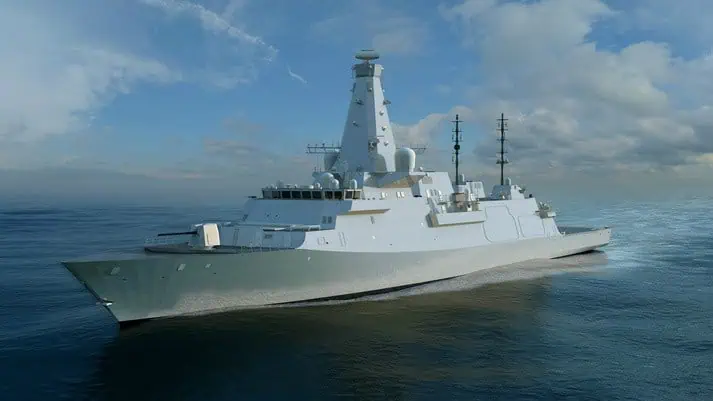BAE Systems has contracted Norwegian shipyard Umoe Mandal to deliver advanced lightweight composite structures to five Type 26 City Class frigates that the British defence contractor is building for the Royal Navy on behalf of the UK Ministry of Defence.
Under the contract, Umoe Mandal will construct and deliver the mast structure, including sponsons, doors, hatches and internal outfitting, plus bulwarks and life raft platforms to each of the five frigates.
“Building on the execution of the contract for the first three composite masts for the first three Type 26 frigates; to secure this second contract for deliveries to five new vessels, is something we are immensely proud of as it is the best possible confirmation that we deliver in line with BAE Systems’ extremely high standards,” says Tom Harald Svennevig, CEO of Umoe Mandal.
Umoe Mandal will construct and assemble all equipment at the company’s yard in Mandal, South Norway. Once completed, the equipment will be shipped to Glasgow, UK, where the frigates are being built. Umoe Mandal will deliver the equipment throughout the 2020s.
“We are pleased to have further strengthened our relationship with Umoe Mandal through securing the supply of a further 5 shipsets of equipment to the Type 26 programme and look forward to working closely with them to identify and develop value adding opportunities over the course of the Type 26 programme,” says Scott Robertson, Type 26 Head of Supply Chain.
Composite benefits
Umoe Mandal offers expert engineering solutions, intelligent materials, and bespoke production facilities for designing and building of advanced composite structures and high-performance vessels. For more than 30 years, Umoe Mandal has delivered custom composite structures built in accordance with demanding military specification to ensure highest performance and long application life.
The mast structures, bulwarks and life raft platforms that Umoe Mandal will supply to the five newbuild frigates will all be constructed from military-grade composite materials.
For modules that are installed high up on the vessel structure, using lightweight composite materials instead of steel contribute to enhancing the vessel’s seagoing characteristics, manoeuvrability and operating window. Installing the same structures in steel would require more ballast water to stabilise the vessel.
“Utilising advanced lightweight composites modules increase vessel stability as it reduces the centre of gravity and increases deadweight capacity, both of which enhance vessel performance. In addition, it reduces maintenance requirements and fuel consumption, which in turn helps to increase the vessels’ operating window,” says Are Søreng, vice president of sales & marketing at Umoe Mandal.
Type 26 City Class frigates
The Type 26 City class frigate is one of the world’s most advanced warships. It is designed for anti-submarine warfare, but is an adaptable vessel and able to quickly adapt for other purposes, for example to transport high volumes of humanitarian aid and house medical facilities.
Three Type 26 frigates are in build in Glasgow. First in Class, HMS Glasgow entered the water in December 2022 to be delivered to the Royal Navy in the mid-2020s.
The Commonwealths of Australia and Canada have selected the Type 26 design, which, together with the UK, provide an anticipated 32 ship programme across the three nations.
“The Type 26 frigates are important vessels for both the UK and NATO with regards to Euro-Atlantic security and security in the High North – areas that share marine boundaries with Norway. Being able to support this defence programme is therefore a proud moment for us at Umoe Mandal,” adds Tom Harald Svennevig.











